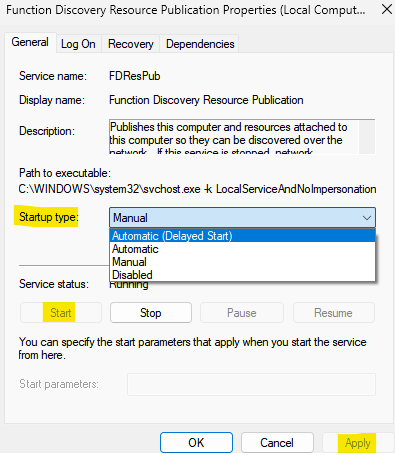

- #Dcom startup time registry value how to
- #Dcom startup time registry value update
- #Dcom startup time registry value portable
- #Dcom startup time registry value windows
Keys are referenced with a syntax similar to Windows' path names, using backslashes to indicate levels of hierarchy. Registry values are non-container objects similar to files. Registry keys are container objects similar to folders.

The registry contains two basic elements: keys and values. (Note however that NTFS provides such support for the file system as well, so the same guarantees could, in theory, be obtained with traditional configuration files.)

#Dcom startup time registry value windows
Windows Vista and later operating systems provide transactional updates to the registry by means of the Kernel Transaction Manager, extending the atomicity guarantees across multiple key and/or value changes, with traditional commit–abort semantics. INI files, such race conditions can result in inconsistent data that does not match either attempted update.
#Dcom startup time registry value update
If two processes attempt to update the same registry value at the same time, one process's change will precede the other's and the overall consistency of the data will be maintained. Backup and restoration is also simplified as the registry can be accessed over a network connection for remote management/support, including from scripts, using the standard set of APIs, as long as the Remote Registry service is running and firewall rules permit this.īecause the registry is a database, it offers improved system integrity with features such as atomic updates. Because user-based registry settings are loaded from a user-specific path rather than from a read-only system location, the registry allows multiple users to share the same machine, and also allows programs to work for less privileged users. This is a benefit when editing keys manually using regedit.exe, the built-in Windows Registry Editor. Furthermore, strongly typed data can be stored in the registry, as opposed to the text information stored in. Since file parsing is done much more efficiently with a binary format, it may be read from or written to more quickly than a text INI file. According to Microsoft, this offers several advantages over. By contrast, the Windows Registry stores all application settings in one logical repository (but a number of discrete files) and in a standardized form. INI files stored each program's settings as a text file or binary file, often located in a shared location that did not provide user-specific settings in a multi-user scenario.
#Dcom startup time registry value portable
NET Framework applications use XML files for configuration, while portable applications usually keep their configuration files with their executables.

It is not a requirement for Windows applications to use the Windows Registry. Windows 95 and Windows NT extended its use to rationalize and centralize the information in the profusion of INI files, which held the configurations for individual programs, and were stored at various locations. When introduced with Windows 3.1, the Windows Registry primarily stored configuration information for COM-based components.
#Dcom startup time registry value how to
For example, when a program is installed, a new subkey containing settings such as a program's location, its version, and how to start the program, are all added to the Windows Registry. In other words, the registry or Windows Registry contains information, settings, options, and other values for programs and hardware installed on all versions of Microsoft Windows operating systems. The registry also allows access to counters for profiling system performance. The kernel, device drivers, services, Security Accounts Manager, and user interfaces can all use the registry. The Windows Registry is a hierarchical database that stores low-level settings for the Microsoft Windows operating system and for applications that opt to use the registry. com /en-us /windows /desktop /SysInfo /registry IA-32, x86-64 and ARM (and historically DEC Alpha, Itanium, MIPS, and PowerPC)ĭocs. Registry Editor, the user interface for the registry, in Windows 11Īpril 6, 1992 31 years ago ( ) with Windows 3.1


 0 kommentar(er)
0 kommentar(er)
